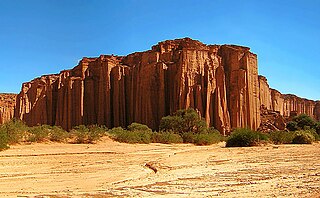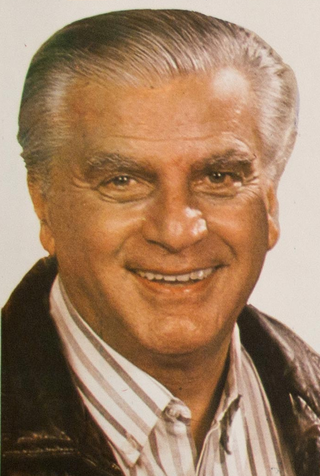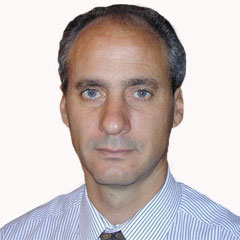
Carlos Saúl Menem was an Argentine lawyer and politician who served as the president of Argentina from 1989 to 1999. Ideologically, he identified as a Peronist and supported economically liberal policies. He led Argentina as president during the 1990s and implemented a free market liberalization. He served as President of the Justicialist Party for thirteen years, and his political approach became known as Menemism.
The politics of Argentina take place in the framework of what the Constitution defines as a federal presidential representative democratic republic, where the President of Argentina is both Head of State and Head of Government. Legislative power is vested in the two chambers of the Argentine National Congress. The Judiciary is independent, as are the Executive and the Legislature. Elections take place regularly on a multi-party system.

Eduardo Alberto Duhalde is an Argentine former peronist politician who served as the interim President of Argentina from January 2002 to May 2003. He also served as Vice President and Governor of Buenos Aires in the 1990s.

Adolfo Rodríguez Saá is an Argentine Peronist politician. Born in a family that was highly influential in the history of the San Luis Province, he became the province's governor in 1983, after the end of the National Reorganization Process military dictatorship. He remained governor up to 2001, being re-elected in successive elections.

La Rioja is a province of Argentina located in the west of the country. The landscape of the province consist of a series of arid to semi-arid mountain ranges and agricultural valleys in between. It is in one of these valleys that the capital of the province, the city of la La Rioja, lies. Neighboring provinces are from the north clockwise Catamarca, Córdoba, San Luis and San Juan. The dinosaur Riojasaurus is named after the province.

The Argentine Federal Police is the national civil police force of the Argentine federal government. The PFA has detachments throughout the country. Until January 1, 2017, it also acted as the local law enforcement agency in the capital, Buenos Aires.

Felipe Solá is an Argentine agricultural engineer and politician. He previously served as Governor of Buenos Aires Province, from 2002 to 2007, and as Minister of Foreign Affairs and Worship under President Alberto Fernández, from 2019 to 2021.

Miguel Ángel Toma is an Argentine Justicialist Party politician.

This article is about the government of Rosario, the third most populated city in Argentina, and the largest in the province of Santa Fe. Rosario has about 910,000 inhabitants 2001 census [INDEC] and is located on the western shore of the Paraná River.

Nilda Celia Garré is an Argentine lawyer, politician, and diplomat. She was Minister of Defense during the presidency of the late Nestor Kirchner and remained in this position, and as Minister of Security, under President Cristina Fernández de Kirchner. She was the first woman in her country's history to serve in either office. She also served as the Argentine Representative to the OAS. She served numerous terms as a member of the Argentine Chamber of Deputies, the latest one from 2015 to 2019.

Republican Proposal is a right-wing political party in Argentina. It is usually referred to by its abbreviation, PRO. PRO was formed as an electoral alliance in 2005, but was transformed into a national party in 2010. It is the major component of the Juntos por el Cambio coalition, and its leader is former Argentine president Mauricio Macri.

Daniel Fernando Filmus is an Argentine politician and academic, who served as the country's Minister of Science, Technology and Innovation, from 2021 to 2023.

Antonio Francisco Cafiero was an Argentine Justicialist Party politician. Cafiero held a number of important posts throughout his career, including, most notably, the governorship of Buenos Aires Province from 1987 to 1991, the Cabinet Chief's Office under interim president Eduardo Camaño from 2001 to 2002, and a seat in the Senate of the Nation from 1993 to 2005.

The Argentine general election of 1989 was held on 14 May 1989. Voters chose both the President and their legislators and with a turnout of 85.3%, Carlos Menem won the presidency, and the Peronist Justicialist Party won the control of both houses of Congress. This is the last presidential election the president was elected by the electoral college.

Juan Pablo Cafiero is an Argentine politician and the Argentine Ambassador to the Vatican since 2008. He has served as a National Deputy and government minister, and is the son of Peronist Antonio Cafiero.

The Buenos Aires City Legislature is the legislative power of the government of the Autonomous City of Buenos Aires, Argentina. It is housed in the Legislature Palace, an architectural landmark in the barrio of Montserrat.
Jorge Alberto Palacios, also known as "Fino" Palacios was a controversial Argentine policeman.

Federal Peronism, also known as Dissident Peronism, is the faction or branch of either moderate, centrist or right-wing Peronism, that is currently identified mostly by its opposition to Kirchnerism, the left-wing faction of Peronism.

Broad Front UNEN was an center-left political coalition in Argentina. It arose through an alliance between Radical Civic Union, Civic Coalition ARI, Proyecto Sur, Freemen of the South Movement, Socialist Party, Authentic Socialist Party, and GEN.


















